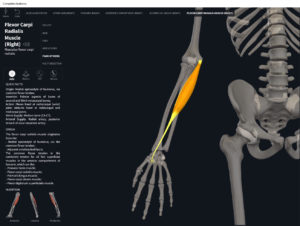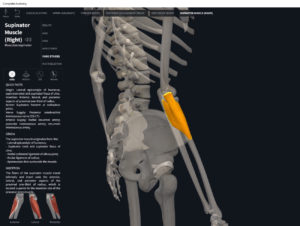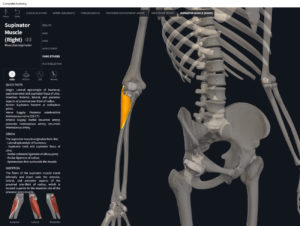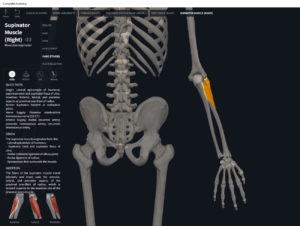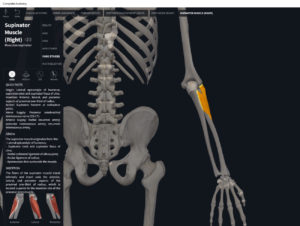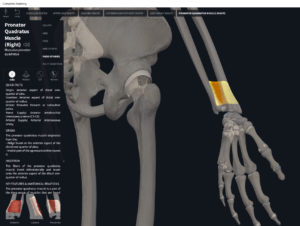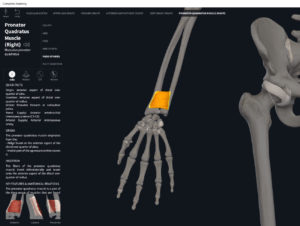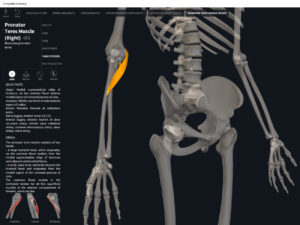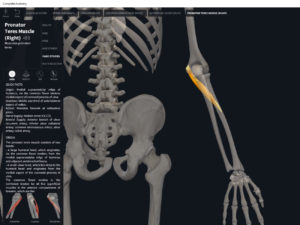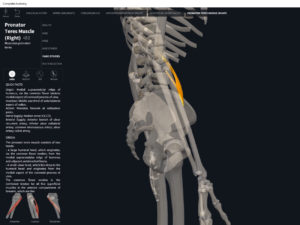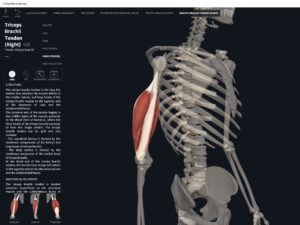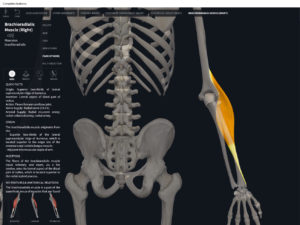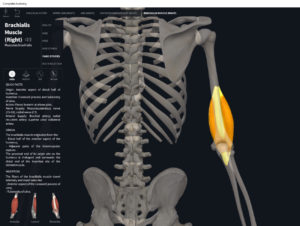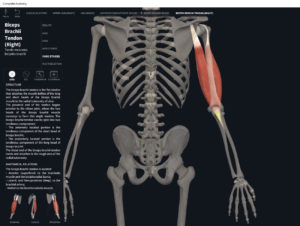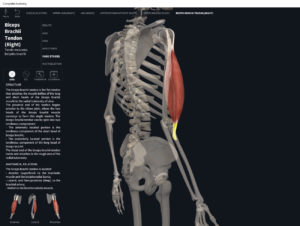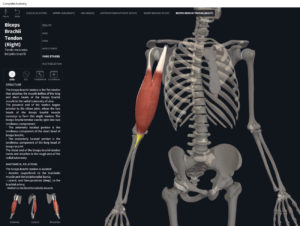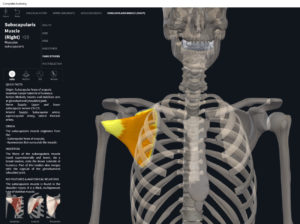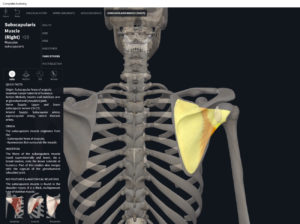Anatomy & Physiology: Muscles—Flexor Carpi Radialis.
Structure.
- Origin: medial epicondyle of humerus.
- Insertion: second and third metacarpals.
Function.
- Concentric action: flexes and abducts hand (radial deviation) at wrist joint. Lesser: elbow flexion, forearm pronation.
- Reverse mover action: forearm flexion, radial deviation at wrist joint, elbow flexion, pronation, lateral rotation at shoulder joint.
- Eccentric action: controls/restrains/slows wrist extension, ulnar deviation, elbow extension, supination.
- Isometric action: stabilize wrist, elbow, and radioulnar joint.
- Innervation: median nerve.
- Arterial supply: ulnar and radial arteries (branch of brachial artery).
Clinical Significance.
References
Biel, A. (2015). Trail guide to the body: A hands-on guide to locating muscles, bones and more.
Cedars-Sinai. (2018). Vertebrae of the spine. Retrieved from https://www.cedars-sinai.org/health-library/diseases-and-conditions/v/vertebrae-of-the-spine.html
Clark, M., Lucett, S., Sutton, B. G., & National Academy of Sports Medicine. (2014). NASM essentials of corrective exercise training. Burlington, MA: Jones & Bartlett Learning.
Jenkins, G., & Tortora, G. J. (2012). Anatomy and Physiology: From Science to Life, 3rd Edition International Stu. John Wiley & Sons.
Muscolino, J. E. (2017). The muscular system manual: The skeletal muscles of the human body.
